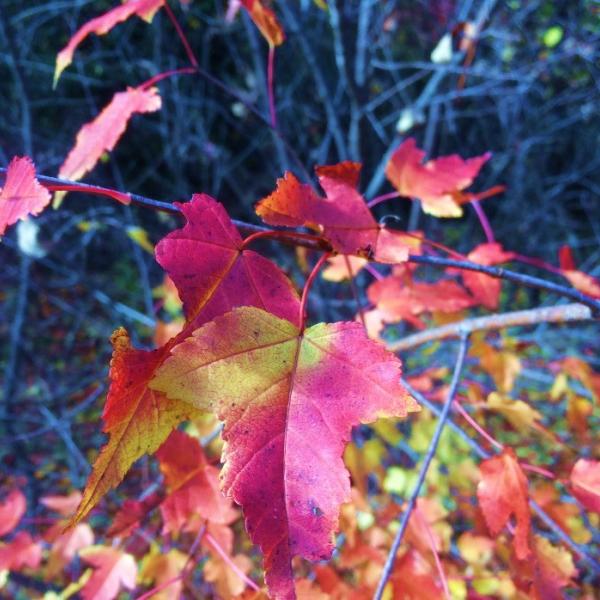
Amur Maple, Acer ginnala, belongs to the Sapindaceae family, which now includes previous members of Aceraceae (maple family). It is native to northern China and Japan, and was introduced into North America in 1860. Beginning in the 1950s, Amur Maple was reported as “locally established”. Its cold hardiness has led to it being widely used as an ornamental tree in colder North American regions. This species is now documented in the Northeast, North Central US, and the Canadian Provinces of Ontario, Manitoba, New Brunswick, and Saskatchewan.
You can identify Amur Maple by its distinctive fire red foliage in the fall. The leaves are simple, oppositely arranged, have a doubly toothed margin, and three lobes. Amur Maple’s leaves are longer than wide, with a prominent central lobe. This small tree (~20 ft in height) also leafs out early in the spring, and then produces fragrant yellow-white flowers. The fruit are paired samaras that are nearly parallel to each other, and persist on the tree long into the fall.
Red Maple (Acer rubrum) can look similar to Amur Maple, with a longer central lobe, and doubly serrate margins. A few distinguishing characteristics include the much more prominent central lobe on A. ginnala, and the reddish in color of A. rubrum flowers.
New research published last year from Schuster and Reich in Minnesota suggests that Amur Maple can establish dense canopies, reducing understory cover diversity. It can be found in forests, forest edges, meadows, fields and disturbed habitats. This documented behavior, and its continued spread in Vermont, are reasons this species is listed on Vermont’s Noxious Weed quarantine.
To learn more, check out the Amur Maple invader page and these additional resources:
Photo Credit:
Acer ginnala leaf, showing three distinct lobes, the center one quite prominent. E. Spinney, VT FPR